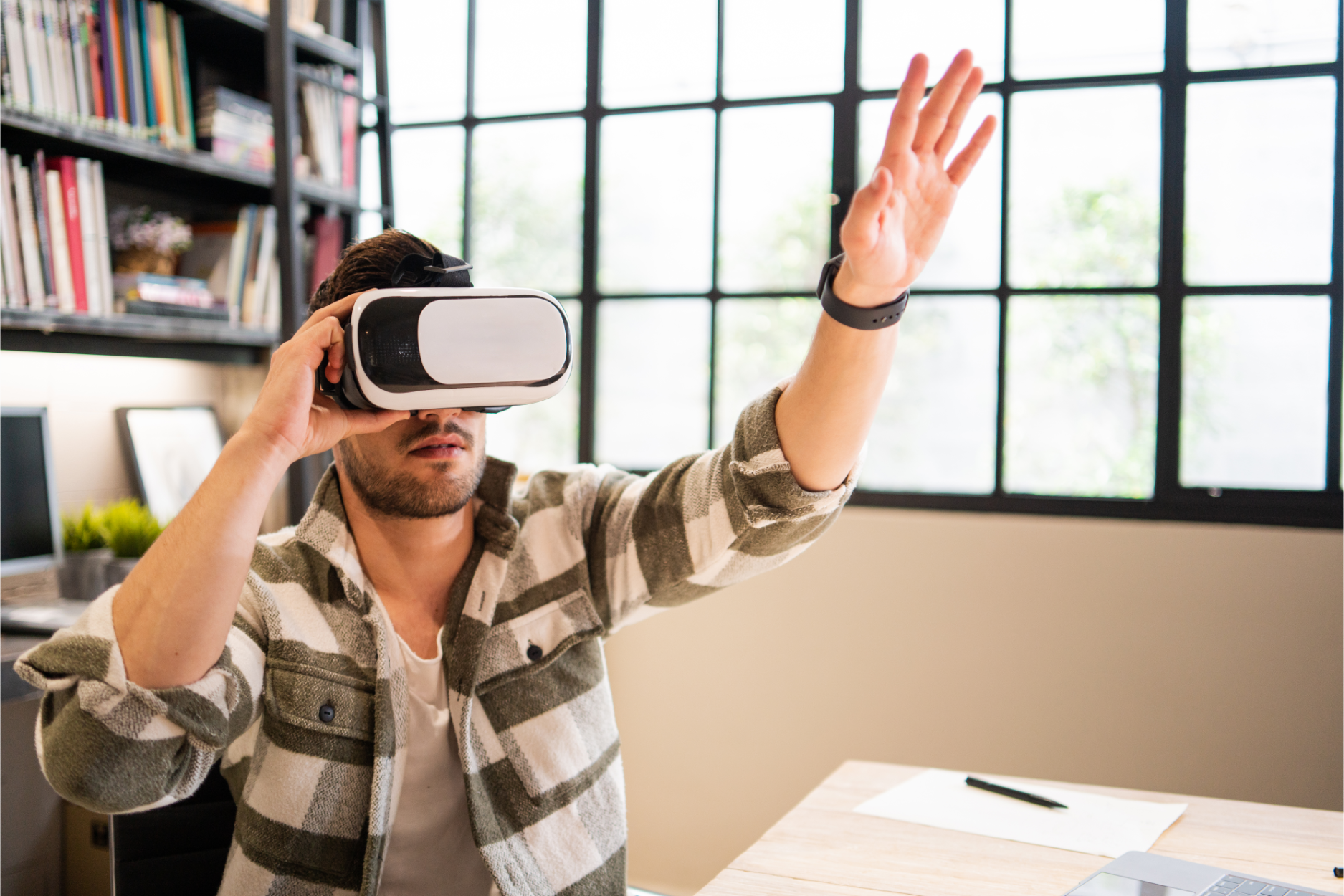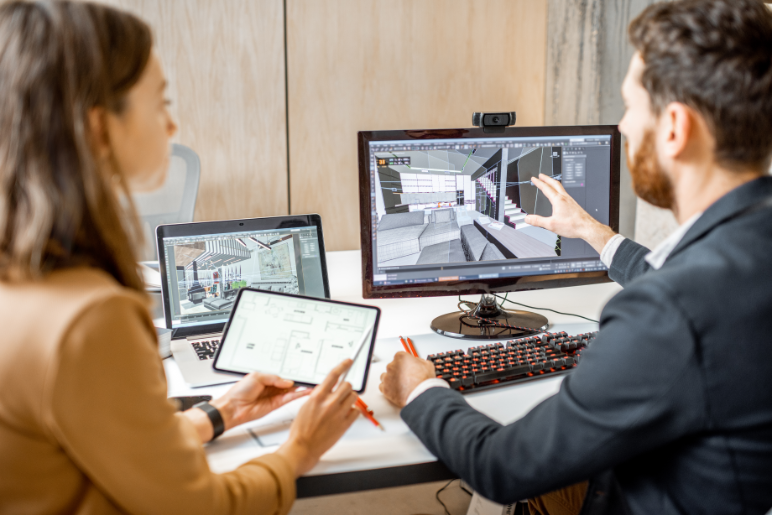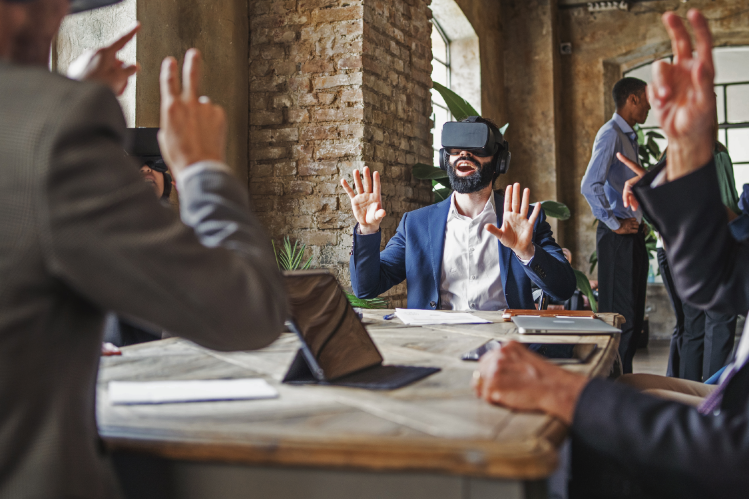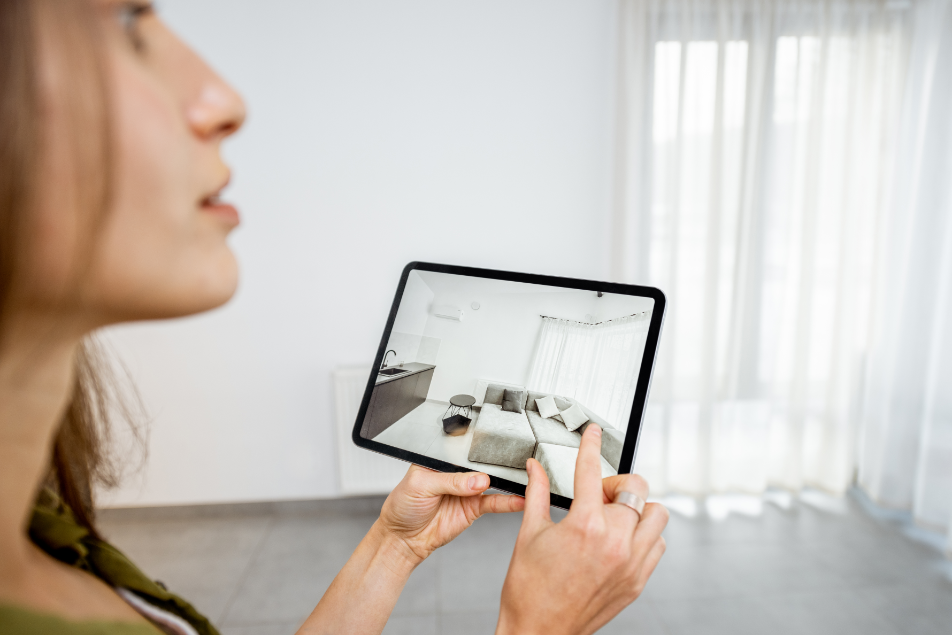
In the dynamic landscape of technology, where innovation continuously reshapes our interactions with the world around us, emerges a groundbreaking concept that promises to redefine our very perception of reality. This concept, known as parallel reality, stands at the forefront of immersive experiences, offering a new dimension where the lines between the physical and digital realms blur, creating an astonishing synergy.
At its core, parallel reality is not just a technology—it's a transformative paradigm that harnesses the power of immersive 3D to transport us into realms that seamlessly blend with our physical surroundings. As we delve into the realms of product experiences, it becomes clear that product visualization holds immense significance. The ability to see, understand, and engage with products before making a purchase decision has a profound impact on our choices and overall satisfaction.
Imagine being able to step into a world where you're not merely browsing through images or descriptions, but actively engaging with products as if they were right in front of you.
Parallel reality bridges the gap between imagination and reality, elevating the concept of immersive 3D to unprecedented heights. The potential of experiencing products in your immediate physical space is not just a convenience; it's a revolution that reshapes how we interact with the objects that enrich our lives.
In this exploration, we embark on a journey to uncover the intricate relationship between parallel reality, Virtual Reality (VR), Augmented Reality (AR), and the transformative power of product visualization. As we delve into the intricacies of these technologies, we're poised to witness how they collectively shape and elevate product interactions. Brace yourself for a voyage that transcends boundaries, where the tangible and digital merge, and where the concept of reality embraces a parallel existence.

Enter a world where the boundaries between reality and the digital realm blur, giving rise to an experience that's both extraordinary and seamless. This is the realm of parallel reality technology—a revolutionary advancement that redefines how we perceive and interact with products, transcending the confines of screens and images.
Parallel reality technology is all about merging the tangible with the virtual. Through specialized devices like smartphones or wearables, it introduces digital elements into your physical surroundings. Imagine seeing furniture, décor, or designs projected into your space, coexisting harmoniously with the world around you.
Picture yourself in your living room, using your device to witness a lifelike representation of a sofa placed exactly where you're considering it. You can walk around it, observe it from different angles, and gauge how it complements your décor. This fusion of your environment with virtual objects offers an unparalleled product engagement.
Parallel reality transcends static visuals and transforms them into interactive experiences. It's not just about seeing; it's about experiencing. This technology empowers you to interact with virtual items as if they were present, allowing you to truly grasp their size, aesthetics, and fit within your space.

Augmented Reality (AR) technology enriches our physical environment by overlaying digital content onto the real world. It enhances what we see, hear, and feel by seamlessly integrating virtual elements into our immediate surroundings. The goal is to create a harmonious blend of reality and virtuality, enhancing the user's overall experience.
AR's impact on product visualization is profound. Imagine using your smartphone to view your living room through its camera, and then adding virtual furniture into the space. These digital pieces appear as if they're actually there, allowing you to evaluate how they fit within your environment. AR empowers you to interact with products in real time, exploring design choices and making informed decisions.
One of AR's remarkable strengths lies in its ability to visualize products in their intended context. It offers a preview of how items will look and feel in your actual environment. This context-rich experience eliminates guesswork, enabling you to assess size, color, and design compatibility accurately. AR enhances your connection with products, transforming your shopping journey into an immersive adventure.
Virtual Reality (VR) technology transports users to fully immersive digital environments. By wearing a VR headset, you're transported to a three-dimensional world where everything you see is created virtually. The goal is to envelop users in an alternate reality that feels convincing and engaging.
In the context of product visualization, VR allows you to step into a simulated setting where products take center stage. You can explore a virtual showroom, walk through a digitally recreated home, or even design your space entirely in VR. This technology offers an unparalleled level of immersion, enabling you to experience products as if they were physically present.
VR's strength lies in its ability to provide a complete escape from reality. It offers an extraordinary level of realism and engagement, making it ideal for design exploration and creative experiences. However, VR's limitation is that it requires dedicated equipment, like a headset, which might not be accessible to everyone. Additionally, while it excels in immersion, it can sometimes lack the real-world context that AR effortlessly provides.
In the merging worlds of Augmented Reality and Virtual Reality, product visualization takes on new dimensions, redefining how we explore and connect with items.

In the world of immersive technologies, where Parallel Reality, Augmented Reality (AR), and Virtual Reality (VR) converge, the measurement of product experiences goes beyond mere aesthetics. A comprehensive evaluation requires us to dissect various dimensions that collectively shape a user's interaction. As we delve into the realm of enhanced product experiences, let's define the key metrics that hold the power to elevate the overall engagement.
Why Realism Matters: Realism gauges how faithfully virtual elements align with the real world. It directly impacts the credibility of the experience, influencing how users perceive and engage with digital content.
Why Interaction Matters: Interaction assesses the extent to which users can engage with and manipulate virtual objects. It's a pivotal factor that determines the level of control and engagement within the immersive environment.
Why Immersion Matters: Immersion measures the degree to which users feel submerged in the digital environment. It explores how well the technology convinces users that they're part of a virtual world.
Why Personalization Matters: Personalization evaluates the technology's ability to tailor experiences to individual preferences and needs. It enhances engagement by providing content that resonates with each user.
Why Context Matters: Context examines how well virtual content integrates with the user's real-world environment. It's a metric that's especially critical in making virtual experiences feel seamless and relevant.
Why Ease of Use Matters: Ease of use gauges how intuitively users can interact with technology. It's a key factor that determines whether users can seamlessly navigate the immersive environment.
Why Accessibility Matters: Accessibility measures the inclusivity of the technology, assessing how easily users can access and engage with it. It's crucial to ensure that immersive experiences are available to a wide audience.

As we navigate the realm of enhanced product experiences, these metrics serve as our guiding stars. They provide a holistic perspective, allowing us to evaluate how Parallel Reality, AR, and VR perform in each dimension. By understanding how each technology excels and where it might have limitations, we can make informed assessments of their impact on product interactions. It's through these metrics that we unlock insights into the immersive future, where the line between the tangible and the virtual seamlessly fades away.
In the immersive landscape of Parallel Reality, Augmented Reality (AR), and Virtual Reality (VR), each technology brings its unique strengths to the forefront. As we delve into a comparative analysis based on the defined metrics, we uncover how Parallel Reality stands out, painting a picture of its prowess in shaping exceptional product interactions.
Parallel Reality: It shines by seamlessly blending digital elements into the real world, offering an experience that's practically indistinguishable from reality.
AR: It overlays virtual content onto real environments, but the integration might sometimes feel more superficial.
VR: It excels in creating wholly immersive digital worlds, but lacks the immediate connection to the real environment.
Parallel Reality: It triumphs by allowing users to interact with digital objects as if they were physically present.
AR: It enables interaction, though the extent might be limited by the overlay nature of the technology.
VR: It offers immersive interactions, but the tangible connection to the user's surroundings is missing.
Parallel Reality: It immerses users by integrating virtual elements naturally into their surroundings.
AR: It immerses users to an extent, but the presence of the real world might sometimes disrupt the experience.
VR: It immerses users fully into a digital environment, isolating them from the real world.
Parallel Reality: It excels by tailoring digital content to individual preferences within real spaces.
AR: It offers some level of personalization, but the connection might not be as seamless.
VR: It can provide personalized experiences, but the focus is primarily within the virtual realm.
Parallel Reality: It seamlessly integrates virtual content with real environments, enhancing context.
AR: It offers context by overlaying digital elements, but the integration might vary.
VR: It's less focused on real-world context, as the experience is primarily confined to virtual spaces.
Parallel Reality: It's inherently user-friendly, as users interact within their own familiar spaces.
AR: It's generally easy to use, though the overlay concept might require some adjustment.
VR: It can be user-friendly but requires dedicated equipment and a learning curve.
Parallel Reality: It embraces accessibility by utilizing devices like smartphones that are widely available. AR: It's accessible with smartphones, though full AR experiences might require more advanced hardware. VR: Accessibility can be limited by the need for specialized hardware, potentially excluding some users.
In the realm of product experiences, Parallel Reality's strengths become evident. Imagine virtually placing furniture items within your living room, arranging them with precision, and truly feeling their presence. The seamless integration of digital content with your immediate environment opens doors to experimentation, visualization, and confident decision-making. Parallel Reality enriches your connection with products by enhancing realism, interaction, immersion, personalization, context, ease of use, and accessibility.
Consider a scenario where you're envisioning a new sofa. With Parallel Reality, you can view that sofa in your own space, walk around it, assess its fit, and gauge its compatibility with your existing décor. The technology makes it possible to experiment in real time, turning your surroundings into an interactive canvas.
In this comparative journey, Parallel Reality emerges as a transformative force that amplifies the strengths of AR and VR, offering a unique blend of the tangible and the virtual. It's a technology that redefines product engagement, unlocking a new realm of possibilities where digital and physical worlds seamlessly intertwine.
As the curtain rises on the future of technology, one concept stands poised to take center stage: Parallel Reality. This revolutionary advancement isn't just transforming product visualization; it's rewriting the rules of how we engage with the world around us. Let's peer into the crystal ball and explore the potential that Parallel Reality holds for industries and customers alike.
Imagine a retail experience where customers step into a store and, armed with their devices, seamlessly interact with virtual representations of products. Parallel Reality opens a new chapter in customer engagement, allowing them to see, feel, and customize items within their physical environment. The furniture industry, for instance, can let customers virtually arrange and try out pieces before making decisions, fostering a deeper connection and informed purchases.
1. Furniture and Interior Design: Parallel Reality becomes a game-changer, enabling customers to virtually "try before they buy." Design enthusiasts can visualize furniture in their homes, ensuring the perfect fit and aesthetic harmony.
2. Retail and Fashion: Customers can see how clothing fits and complements their style by virtually "trying on" outfits. Virtual showrooms and fitting rooms revolutionize the retail experience.
3. Real Estate: Homebuyers can explore potential properties virtually, walking through rooms and visualizing future layouts. Parallel Reality eliminates geographical limitations, offering immersive property tours.
4. Automotive: Car enthusiasts can virtually sit in vehicles, customize features, and experience driving simulations. Parallel Reality takes test drives to a whole new level.
In the not-so-distant future, Parallel Reality seamlessly integrates into our lives. Imagine picking out furniture, trying on clothes, or exploring destinations—all from the comfort of your space. It's a world where decisions are empowered by interaction, where personalization meets immersion, and where shopping transcends the confines of screens. Parallel Reality becomes more than just a tool; it becomes a cornerstone of our everyday experiences.
As we look ahead, Parallel Reality has the potential to redefine how we discover, engage, and make choices. It's a stepping stone into a future where the boundaries between the real and the virtual blur, and where our interaction with products becomes a dynamic, holistic journey. Parallel Reality isn't just a technology; it's an evolution, an unfolding story that's set to revolutionize how we connect with the world and the products that fill it.
Read also: Empower Your Customers To View Products In Immersive 3D & Witness The Best Of Conversions

TWINN Vision stands at the forefront of innovation, seamlessly merging technology and design to pioneer a new era of immersive product experiences. At its core lies the groundbreaking concept of Parallel Reality, a cutting-edge technology that redefines how we visualize and engage with products. By leveraging Parallel Reality, TWINN Vision catapults product interactions into a realm where the virtual and the physical coalesce, creating an unparalleled 3D experience.
Parallel Reality empowers TWINN Vision to revolutionize product visualization. Imagine virtually placing furniture, décor, or even entire room layouts within your own space. With TWINN Vision, this becomes a reality. Parallel Reality overlays meticulously detailed 3D representations of products onto your surroundings, enabling you to explore, interact, and assess them as if they were physically present.
The magic lies in the seamlessness of the experience. TWINN Vision's Parallel Reality seamlessly integrates digital content with your environment, erasing the line between the real and the virtual. It's a technology that goes beyond visuals, inviting you to truly engage with products. You can walk around them, evaluate proportions, and even customize them in real-time.
TWINN Vision's Parallel Reality transforms product discovery into an adventure, turning spaces into dynamic showcases. It's a game-changer for industries ranging from interior design to retail, where customers can now make decisions with unparalleled confidence. As the boundaries of possibility continue to expand, TWINN Vision remains at the forefront, harnessing the power of Parallel Reality to create immersive 3D experiences that redefine how we connect with products.
FAQs
Twinn Vision is a revolutionary technology that utilizes parallel reality to create immersive 3D experiences. It overlays lifelike digital representations of products onto your real-world environment, allowing you to interact with and visualize them as if they were physically present. This technology enhances product engagement, enabling accurate assessments and personalized customization.
Parallel Reality can be experienced through specialized devices, such as smartphones or wearable gadgets. These devices serve as windows to the parallel reality, seamlessly merging digital content with your surroundings for an enriched product interaction.
Parallel Reality enhances product experiences by offering a natural, immersive way to interact with virtual items. It allows you to place and manipulate products within your space, aiding in accurate visualization, customization, and decision-making.
Parallel Reality is an advanced technology that seamlessly blends virtual and physical environments. It overlays digital content onto your real-world surroundings through devices like smartphones, enabling you to interact with and visualize virtual elements as if they were physically present.